Olympisch Stadion (Kiel)
If the history of the Beerschot's lair itself is relatively clear, tracing the life of the resident club in Kiel since 1899
is another story : the Beerschot has always been an unstable club with a sulfurous reputation.
Summary of the story of a stadium of world significance.

Horse racetrack and betrayal as origins
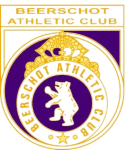 While the city of Antwerp has been living to the rhythm of football since 1880 thanks to Royal Antwerp FC, a new club was founded
in 1899 south of the port city.
While the city of Antwerp has been living to the rhythm of football since 1880 thanks to Royal Antwerp FC, a new club was founded
in 1899 south of the port city.
The origin of this new club is a sports facility created on an old horse racetrack. Usually, a club is founded then it seeks a
ground to evolve there. In the case of Beerschot, it is the opposite since the club was created to occupy already existing facilities.
Thus, the new club was founded by Ernest Grisar on September 3, 1899 and its colors will be purple and white. The origin of the
name of the club comes from the site where it was founded : the Beerschotshof is a park located in the immediate vicinity of the
stadium. As for the name of the stadium, it was also already found : we will first talk about the Kielstadion, the name of the
district where it is located. Grisar died quickly but his son Alfred took over the leadership of the club.
The club, therefore called Beerschot Athletic Club, has a multi-sport vocation and in addition to football, has sections in
hockey, tennis and athletic sports.
In 1900, in order to complete his team, Alfred Grisar did not hesitate to contact many players from Antwerp FC. They were
disappointed with the loss of the Great Old in a test match against Racing Brussels for the title award and did not hesitate
and joined the Kiel club. Antwerp FC found itself without players and went into inactivity. It didn't take much to create a
tenacious rivalry that continues today. If there is a city where the supporters of the two main clubs hate each other, it is
certainly in Antwerp that they can be found.
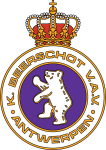 The club’s affiliation to the Belgian federation allows it to participate in the championship. The Beerschot finished second behind
Racing Brussels in its first season. This promising result, however, was not going to be forthcoming and the Beerschot had the sad
honor of becoming the very first club relegated to Belgium. As the number of clubs continued to increase, the federation had no
choice but to create several divisions to allow the many new clubs to play. So, at the end of the 1905-1906 season, the Beerschot
fell into the newly created new second division.
The club’s affiliation to the Belgian federation allows it to participate in the championship. The Beerschot finished second behind
Racing Brussels in its first season. This promising result, however, was not going to be forthcoming and the Beerschot had the sad
honor of becoming the very first club relegated to Belgium. As the number of clubs continued to increase, the federation had no
choice but to create several divisions to allow the many new clubs to play. So, at the end of the 1905-1906 season, the Beerschot
fell into the newly created new second division.
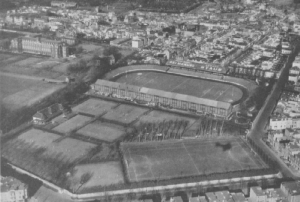
The Kiel, world epicenter of sport
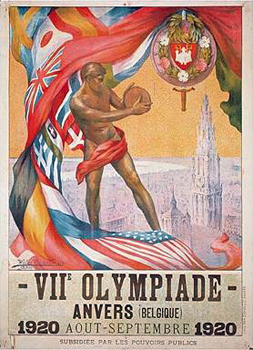 The attribution of the 1920 Olympic Games in Antwerp is due to a few exceptional circumstances. Indeed, the 7th edition was
to be attributed to Berlin but the outbreak of the First World War decided otherwise. Once the conflict was over, a new
designation was organized in 1919 in Lausanne. Were in the running Amsterdam (Netherlands), Lyon (France), Atlanta, Cleveland,
Philadelphia (United States), Budapest (Hungary) and Havana (Cuba).
The attribution of the 1920 Olympic Games in Antwerp is due to a few exceptional circumstances. Indeed, the 7th edition was
to be attributed to Berlin but the outbreak of the First World War decided otherwise. Once the conflict was over, a new
designation was organized in 1919 in Lausanne. Were in the running Amsterdam (Netherlands), Lyon (France), Atlanta, Cleveland,
Philadelphia (United States), Budapest (Hungary) and Havana (Cuba).
Budapest was initially designated as the host city, but since it was part of the former Austro-Hungarian Empire allied with Germany,
it was withdrawn from the vote, as were the German, Austrian, Ottoman and Bulgarian cities. These evictions were against Pierre de
Coubertin’s advice, but the ravages of the Great War were still too much alive. This is how Antwerp received the Olympics to pay
tribute to the suffering inflicted on the Belgian people during the conflict.
Immediately, the port city had to build or adapt many sports facilities. Thus, a swimming pool, an ice palace, the Hoogboom Country Club
and various other sites (notably in Ostend and Brussels) were built or adapted, in addition to the Kiel stadium. The stadium was enlarged
to 35,000 places and a Greek-inspired decor was installed around the stands. In addition, an imposing pavilion is built at the entrance
to the stadium and will serve as the official entrance. The stadium has two seated side stands (two tiers) and two terraces with standing
places. The athletics track was developed by Britain's Charles Perry, the world's leading specialist on athletics tracks. As for the
stadium itself, it would have been partly designed by the English architect Archibald Leitch, very famous at the time for having built
the stadiums of Liverpool, Rangers and Celtic Glasgow, Arsenal, of the two stadiums of Manchester, Chelsea and Tottenham in particular.
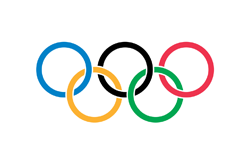 Two symbols of the Games also made their first appearance in Antwerp : the flag and the oath. They are both still very present today.
Two symbols of the Games also made their first appearance in Antwerp : the flag and the oath. They are both still very present today.
Among the highlights is the performance of the Finnish Paavo Nurmi. The latter not only won the 10,000m run, individual
cross and team cross, but also second place in the 5,000m run.
Another star of the time, French tenniswoman Suzanne Lenglen. She won three medals by winning the women's singles and mixed doubles titles.
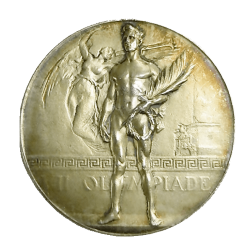
1920 Olympic Gold Medal
As for football, the Red Devils will be crowned Olympic champions in special circumstances. The Belgians, exempt from the first
round, will eliminate Spain and the Netherlands in the ¼ and ½ finals. In the final, they faced Czechoslovakia in a packed Kiel
stadium. Alas, the Czechoslovaks abandoned the match in the 39th minute on the pretext of unfavorable arbitration. They were
disqualified and the Belgians crowned Olympic champions. But the problems in football did not stop there. The match for the silver
and bronze medalists couldn't take place since the French had already returned home. A second tournament was organized between Italy,
Norway, Spain and Sweden on the one hand, and on the other a friendly match between Egypt and Yugoslavia. Spain rose to the final
against the Netherlands (previously eliminated by the Belgians) and won the silver medal before the Dutch.
The title of the Belgians remains to this day the greatest feat of the Devils but it is often concealed. The circumstances of the
victory and the invention of the World Cup ten years later will not help to remember this gold medal
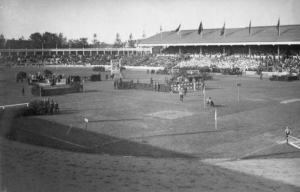
The golden age of Beerschot, then the hell
The Games ended, the Olympic decorations are unfortunately demolished and the Beerschot can take full possession of its
stadium. The figuration that the Purples & Whites did before the war became a dominion of Belgian football.
Between 1922 and 1939, no less than 7 titles will be awarded to beerschotmen (1922, 1924, 1925, 1926, 1928, 1938 and 1939).
The Second World War put an end to this domination and the old club had to wait until the 1970's before returning to win trophies :
the Belgian Cup was won in 1971 (against Sint-Truiden) and in 1979 against Club Brugge.
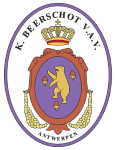 The Beerschot subsequently returned to the ranks but still managed to stay in D1 for 73 years. The death of President Pierre Stoop
in 1976 became synonymous with descent into hell for the Kiel club. The first time relegated for attempted corruption in 1981 against
Beringen FC, the club went back up immediately but the fall continued even more.
The Beerschot subsequently returned to the ranks but still managed to stay in D1 for 73 years. The death of President Pierre Stoop
in 1976 became synonymous with descent into hell for the Kiel club. The first time relegated for attempted corruption in 1981 against
Beringen FC, the club went back up immediately but the fall continued even more.
The 80's and 90's were two dark decades for the club. Between tax adjustments (due in particular to forgery in writing or tax fraud)
and administrative relegation in Division 3 (following a catastrophic financial situation). The 1990-1991 season will be the very last
in Division 1. Going straight back to Division 2 at the end of the 1991-1992 season, the old club will manage to stabilize there for a
few years but will fail to move up in D1. Finally, in 1999, the Beerschot finished last and was relegated to... the 4th division.
Bloodless, the club forfeits will never play in the fourth division. The prestigious registration number 13 is struck off and its
entire history is swept away.
For decades, the club has been unable to maintain its old stadium. The only major works were the creation of skyboxes in place of the
first tier of the main stand. But the rest of the installations fell into disrepair and the second tier of the side stand was to
be demolished in the early 1990's. The capacity fell to 14,000 places.
On June 12, 1999, the Beerschot is no more and its many supporters are left with nothing.
The club will have existed for 99 years and 9 months.
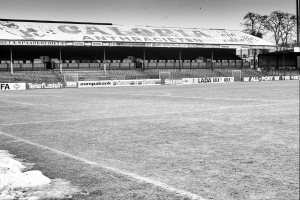
Relocation & modernization
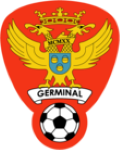 However, the Kiel cannot remain unoccupied. This stadium has such a past that a solution is quickly found to revive the site.
However, the Kiel cannot remain unoccupied. This stadium has such a past that a solution is quickly found to revive the site.
The Germinal Ekeren, a small club passed from the provincial series to the D1 in a few years, faces a stadium that is too
small and impossible to enlarge. Indeed, the Veltwijckparkstadion is stuck in a protected site and will eventually have to
be demolished. However, the club knows a real sporting success but can only count on a few supporters.
The club moves to the Kiel, adapts its colors (originally red and yellow, the purple of Beerschot is added) and changes its name
to Koninklijke Football Club Germinal Beerschot Antwerpen, the new logo incorporating the main elements of the two former clubs.
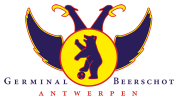 The new Beerschot can no longer be satisfied with a ruined stadium. Quickly, three stands were demolished and replaced by new
constructions exclusively housing seat places. In addition, the famous athletics track disappears and the Kiel becomes a stadium
exclusively reserved for football. From the Games stadium, only the second floor of the main stand remains. The capacity is
set at 12,771 seats.
The new Beerschot can no longer be satisfied with a ruined stadium. Quickly, three stands were demolished and replaced by new
constructions exclusively housing seat places. In addition, the famous athletics track disappears and the Kiel becomes a stadium
exclusively reserved for football. From the Games stadium, only the second floor of the main stand remains. The capacity is
set at 12,771 seats.
The club continued to grow and won the Belgian Cup in 2005, again facing the Club Brugge. It was thought at the time that the
new Beerschot was on the right track, but the old demons returned to haunt the spans of Kiel.
Torn between the former supporters of old Beerschot and the leaders of the former Germinal, the club becomes unstable again and the
sports results suffer. Registration number 3530 flirts with Division 2 for several seasons.
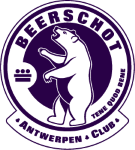 Little by little, the leaders of the former Germinal are ejected and the club changes its name : we are now talking about the
Koninklijke Beerschot Antwerpen Club (registration number 3530) and the colors red and yellow disappear.
Little by little, the leaders of the former Germinal are ejected and the club changes its name : we are now talking about the
Koninklijke Beerschot Antwerpen Club (registration number 3530) and the colors red and yellow disappear.
Unfortunately, at the end of the 2012-2013 season, the club did not receive his professional license and was relegated to Division 3.
As in 1999, the club threw in the towel and the registration number 3530 was struck off.
This is the end of the second version of Beerschot.
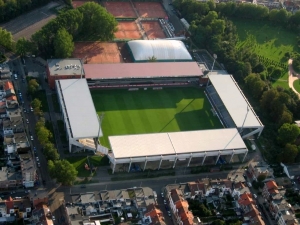
A third life ?
History is stuttering...
The same scenario as in 1999 is implemented. The Kiel stadium (this time in perfect condition) must imperatively find a club
and this time it is Koninklijke FC Olympia Wilrijk (number 155) who is invited to settle at the Olympic Stadium. Once again,
the new occupant adapts to the prestigious past of the stadium by changing its name and coat of arms in 2013.
And as with the ex-Germinal, the past of Olympia is gradually being erased. In 2018, the Belgian federation authorized the club
to recover the number 13 of the original Beerschot. And a year later, the club was renamed Koninklijke Beerschot Voetbalclub Antwerpen.
Olympia Wilrijk no longer exists.
For the moment, the 3rd incarnation of Beerschot hasn't yet managed to reintegrate Division 1 but seems to have finally become wiser.
The future will tell us if Beerschot will be able to register in the future or if it is condemned to be a cursed name of Belgian football.
Finally, a short summary of the different names of the clubs that have played Kiel :
- 1899 : Beerschot Athletic Club (nr 13)
- 1925 : Royal Beerschot Athletic Club (nr 13)
- 1968 : Koninklijke Beerschot Voetbal en Atletiek Vereniging (nr 13)
- 1991 : Beerschot Voetbal en Atletiek Club (nr 13)
- 1995 : Koninklijke Beerschot Voetbal en Atletiek Club (nr 13)
- 1999 : Koninklijke Football Club Germinal Beerschot Antwerpen (nr 3530), previously Koninklijke Football Club Germinal Ekeren
- 2011 : Koninklijke Beerschot Antwerpen Club (nr 3530)
- 2013 : Koninklijke Football Club Olympia Beerschot Wilrijk (nr 155), previously Koninklijke Football Club Olympia Wilrijk
- 2019 : Koninklijke Beerschot Voetbalclub Antwerpen (nr 13)
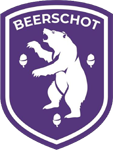
Pictures
Olympisch Stadion (Kiel)
The main stand and only construction of Kiel in its beginnings.
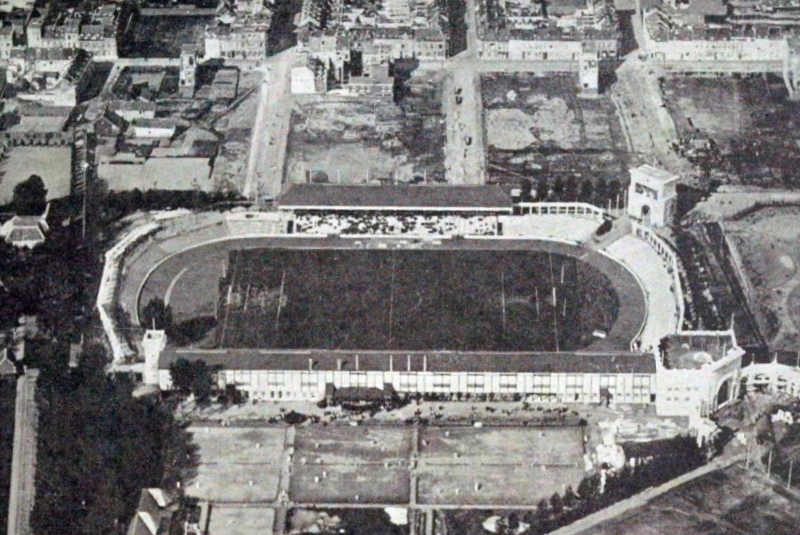
Olympisch Stadion (Kiel)
New stands, a monumental portico, colonnades and a large entrance pavilion are built, the stadium can accommodate 35,000 people.
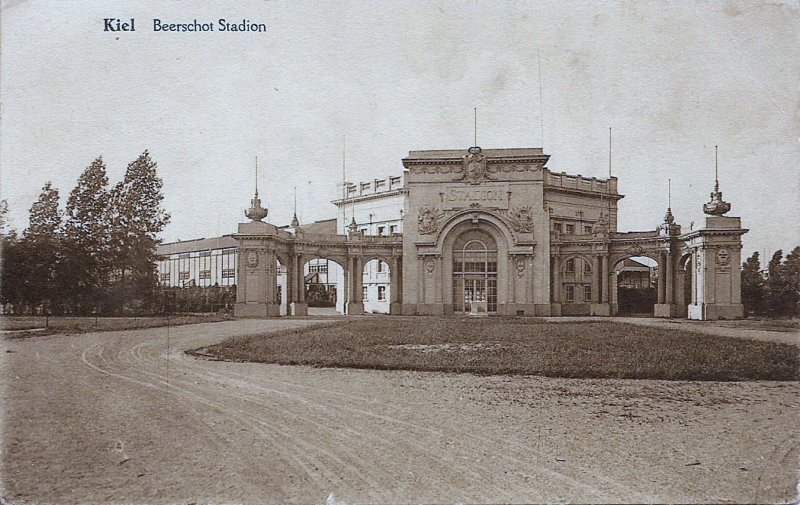
Olympisch Stadion (Kiel)
The monumental entrance pavilion.
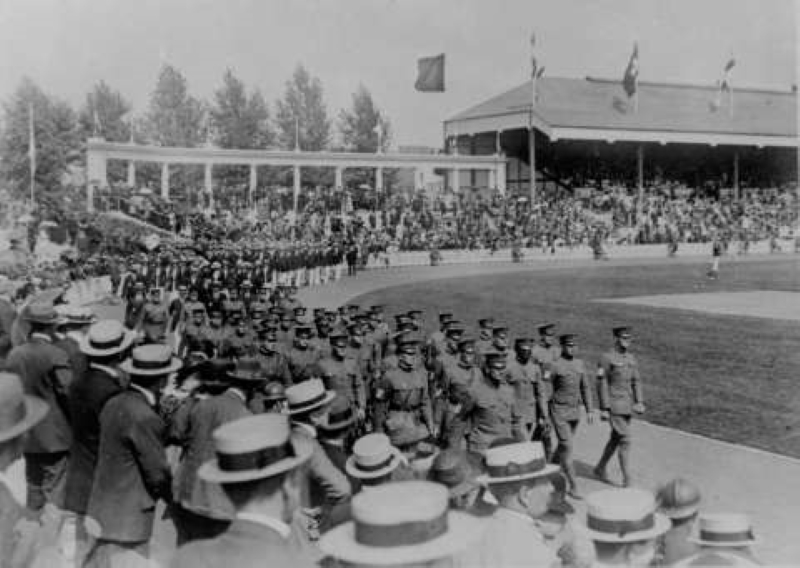
Olympisch Stadion (Kiel)
Inside the stadium (1/2)
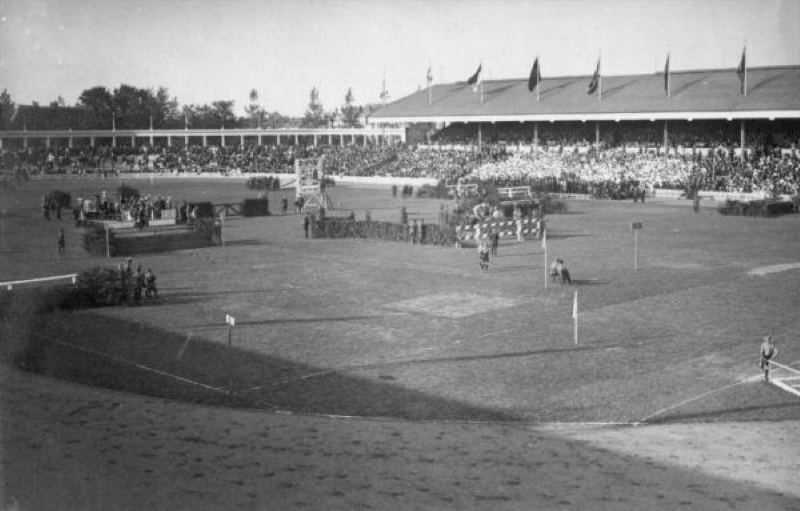
Olympisch Stadion (Kiel)
Inside the stadium (2/2)
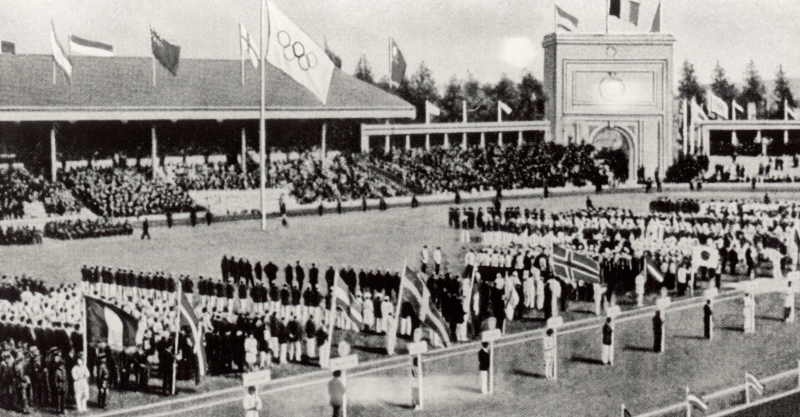
Olympisch Stadion (Kiel)
Opening ceremony on August 20, 1920. For the first time, the Olympic flag was hoisted and the Olympic oath taken by Belgian fencer Victor Boin.
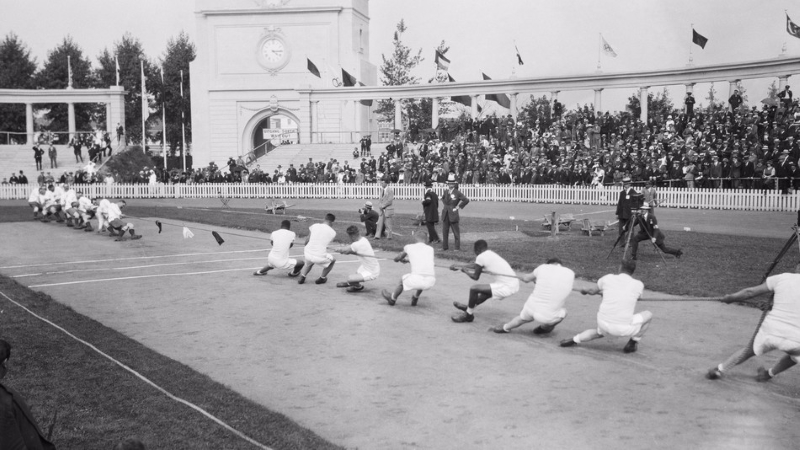
Olympisch Stadion (Kiel)
The tug of war event, in front of the clock's portico.
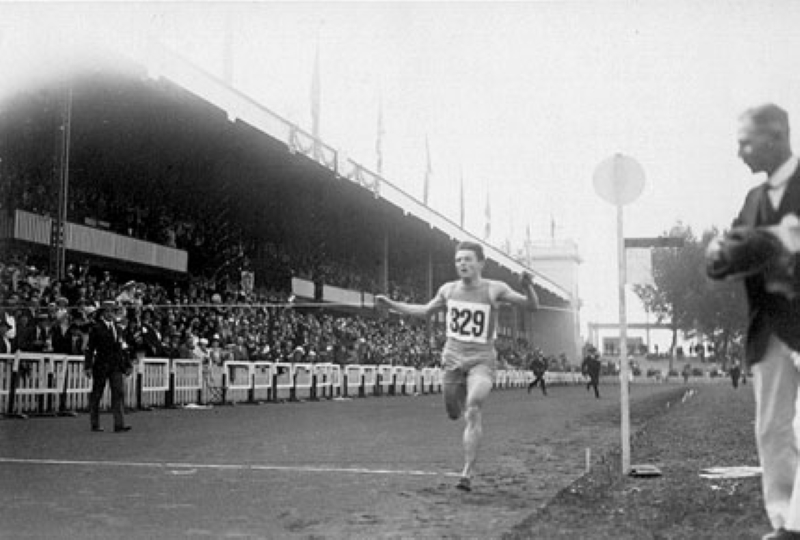
Olympisch Stadion (Kiel)
The Frenchman Joseph Guillemot winning the 5,000m run in front of the Finnish Paavo Nurmi.
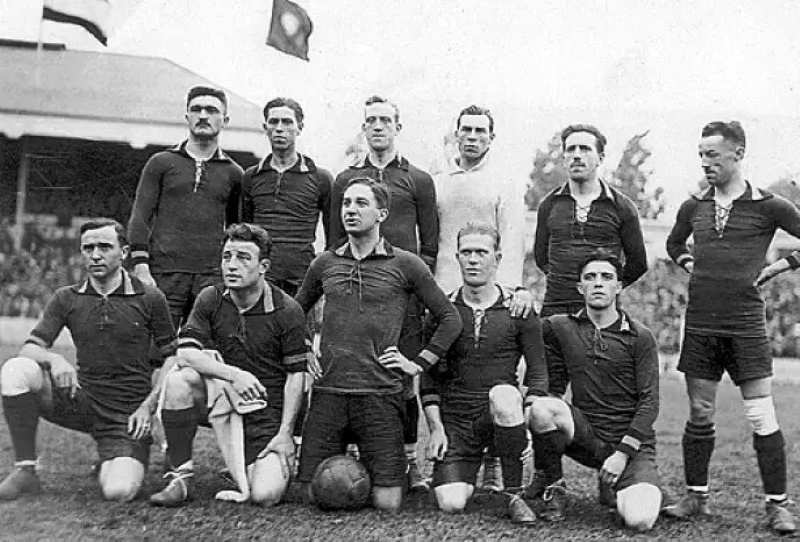
Olympisch Stadion (Kiel)
The Red Devils, winners of the ancestor of the Football World Cup.
Uruguay has the right to wear two stars following its two victories at the Olympic Games (1924 and 1928) but not Belgium !
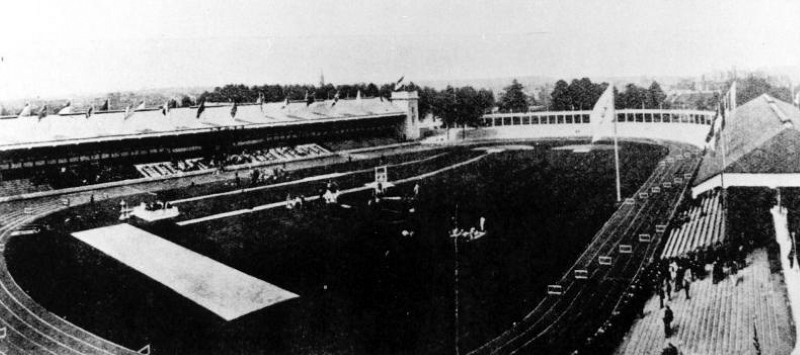
Olympisch Stadion (Kiel)
After the Games, the Olympic decors has been removed but the stadium will remain almost unchanged until the end of the 20th century.
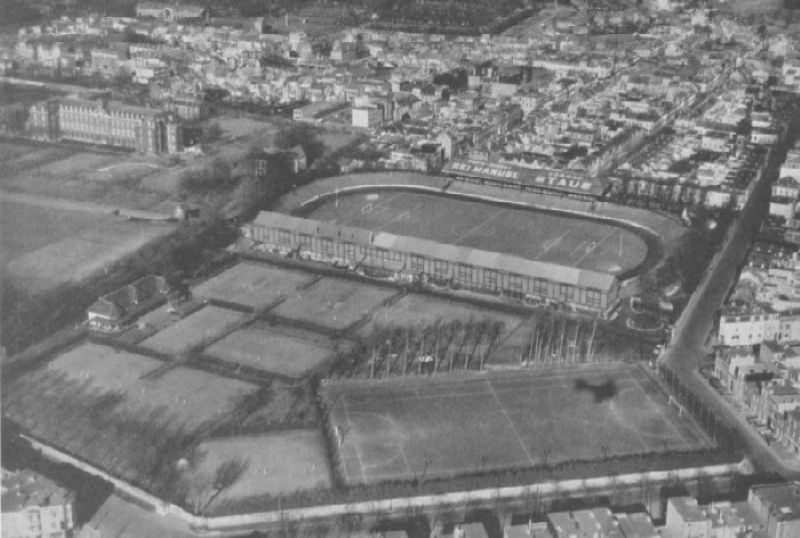
Olympisch Stadion (Kiel)
The Kiel after the Olympics Games.
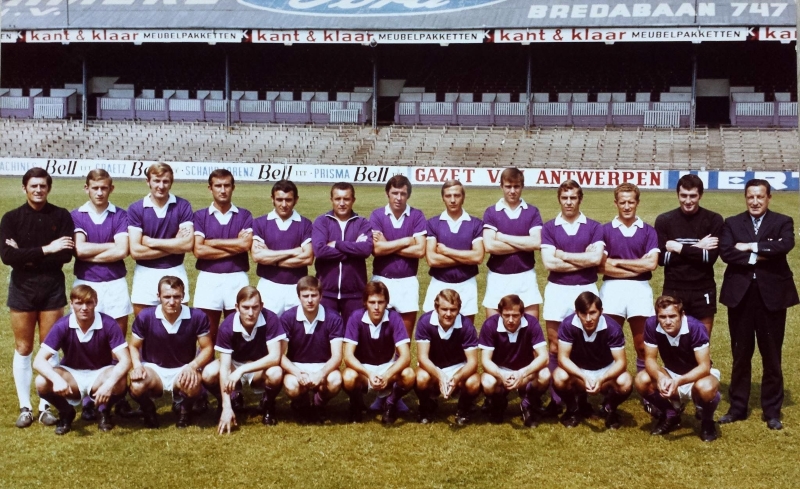
Olympisch Stadion (Kiel)
The Beerschot team posing in front of the old side stand.
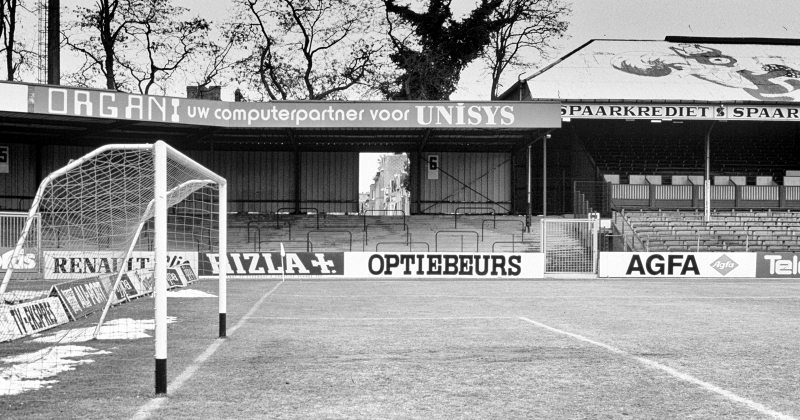
Olympisch Stadion (Kiel)
At the very beginning of the 90’s : the stands and the old terraces are still standing. A roof was simply added above the terraces.
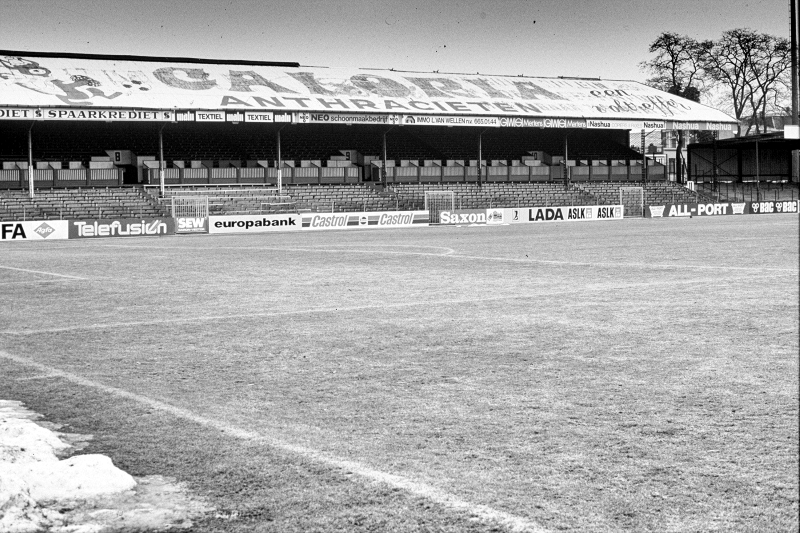
Olympisch Stadion (Kiel)
The side stand. Collapsing under its great age, it will be destroyed around 1991. A new roof will shelter the first tier left intact.
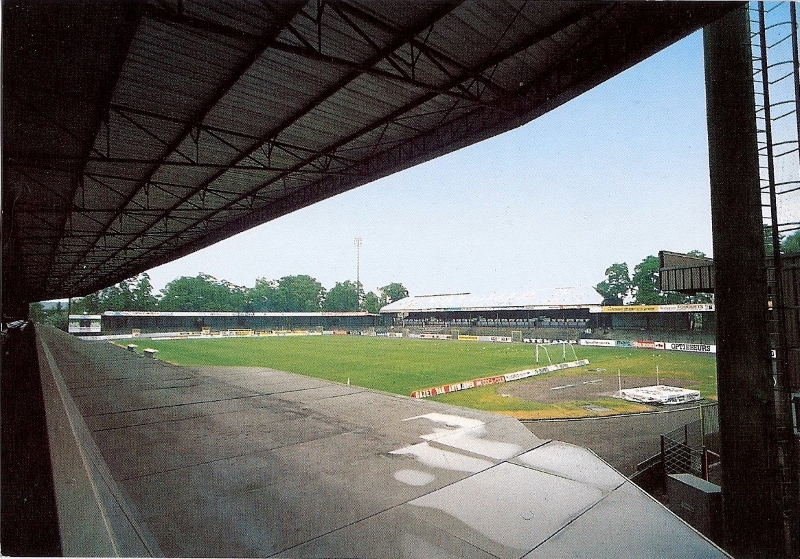
Olympisch Stadion (Kiel)
The Kiel, just before the demolition of the side stand. The main stand has already been modernized with the addition of skyboxes.
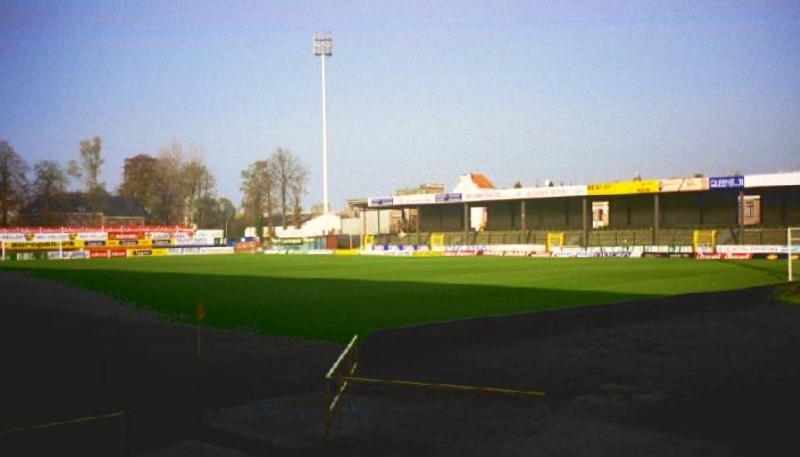
Olympisch Stadion (Kiel)
1999 and the demolition of the old Olympic stadium. A page turns...
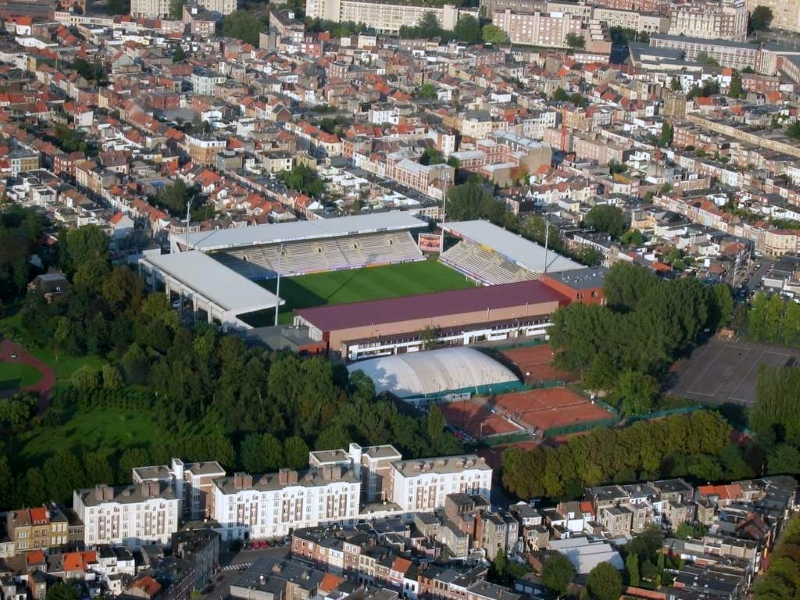
Olympisch Stadion (Kiel)
A modern stadium with almost no vestiges of its Olympic past.
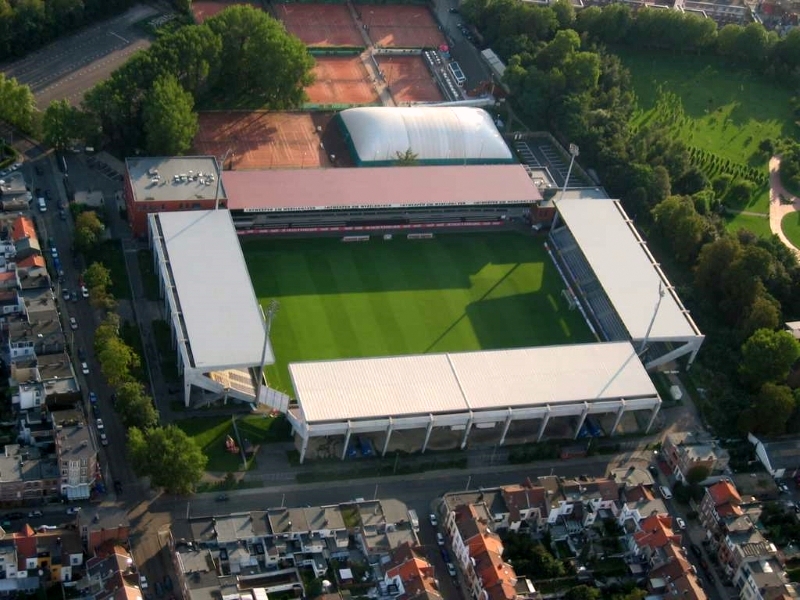
Olympisch Stadion (Kiel)
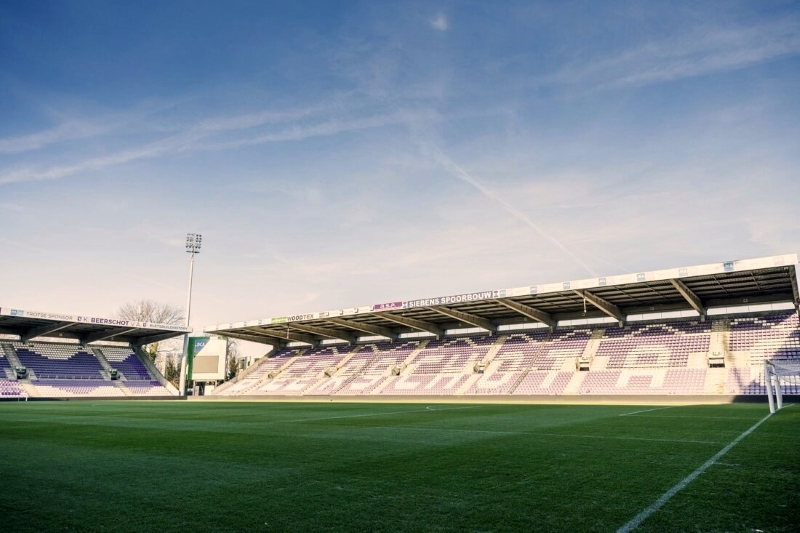
Olympisch Stadion (Kiel)
Just over 12,000 seats and covered places.
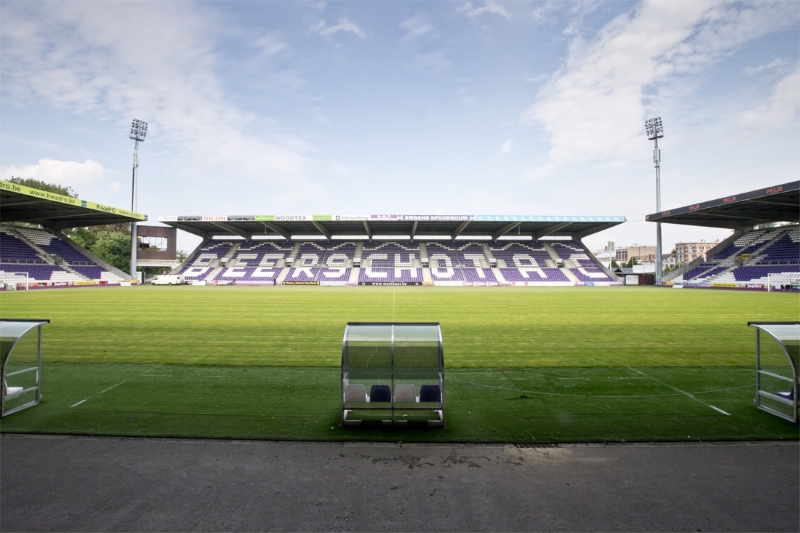
Olympisch Stadion (Kiel)
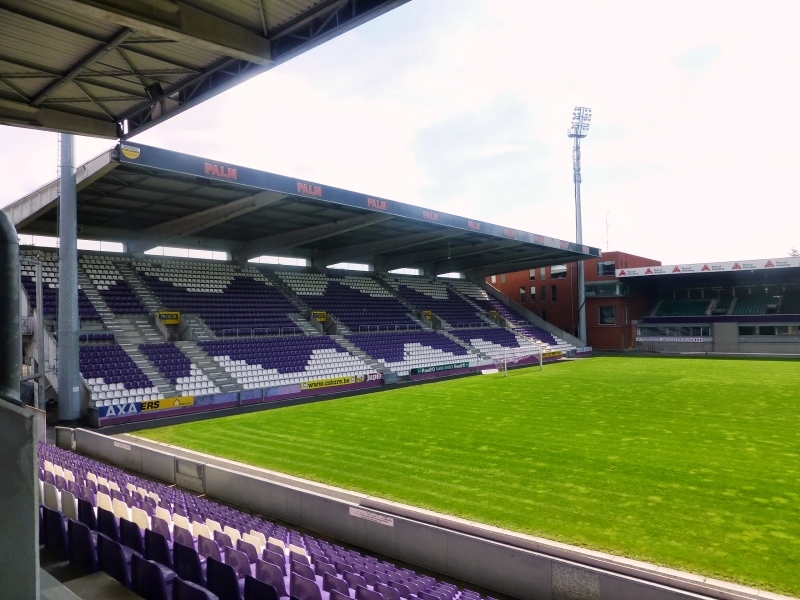
Olympisch Stadion (Kiel)
The Kiel's Rats kop stand.
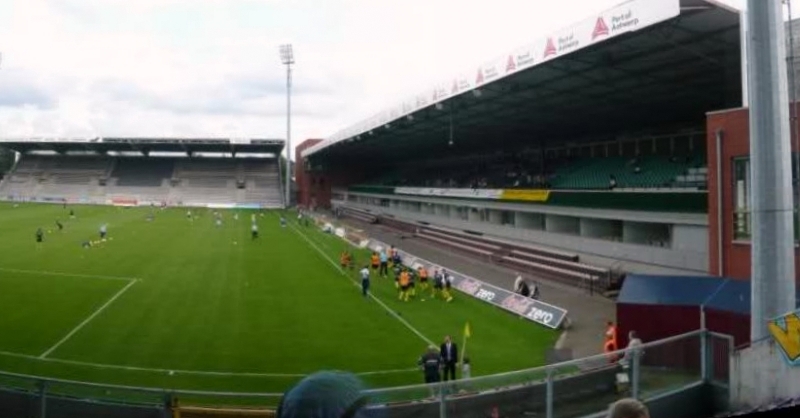
Olympisch Stadion (Kiel)
The only vestige of the old stadium, the main stand upper tier to the right of the image.
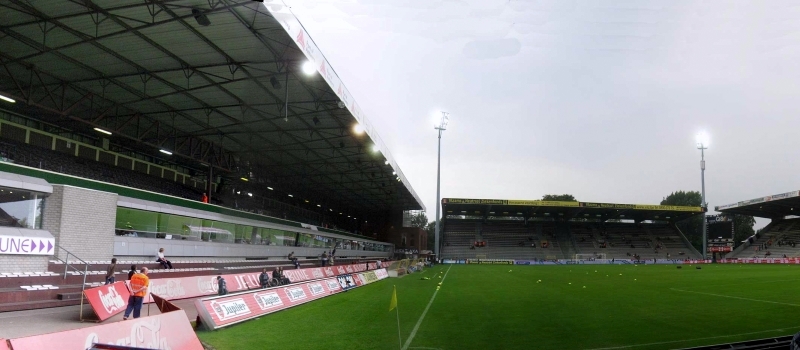
Olympisch Stadion (Kiel)
Three clubs have succeeded here but the supporters are still present.
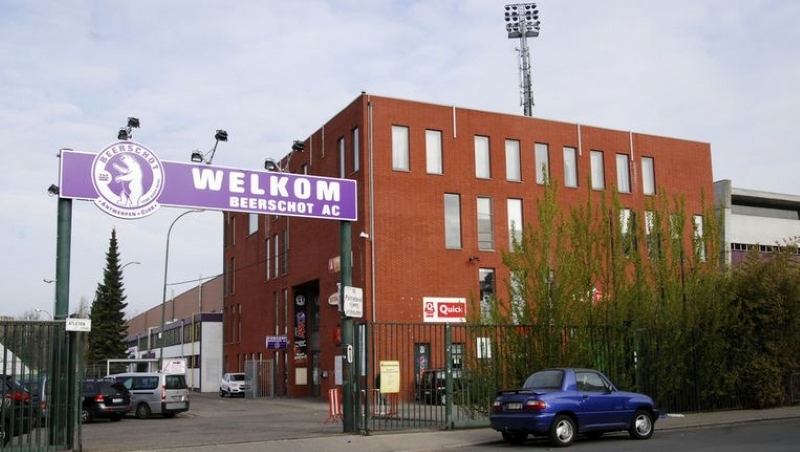
Olympisch Stadion (Kiel)
The new monolithic entrance pavilion. We are far from the artistic research of 1920...
Note
-
This article comes from my old site www.foothisto.be but was never published.
It has been somewhat modified and updated recently (April 2020).
Related pages
- Page dedicated to the visit of the city of Antwerp.
- Page dedicated to the Bosuil, home of the main rival of Antwerp FC.
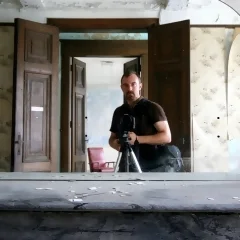
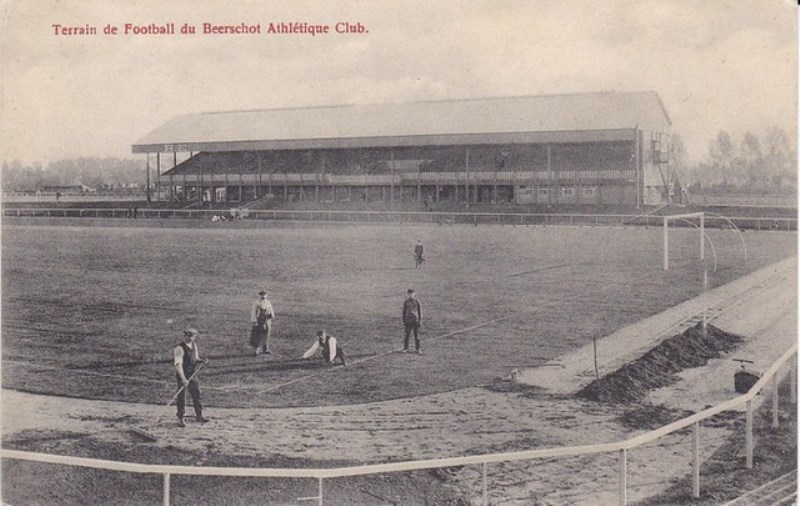
Soyez le premier & devenez quelqu’un de bien • Be the first & become a good person